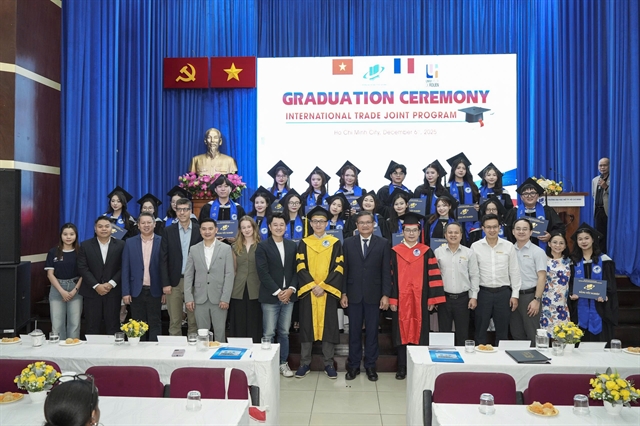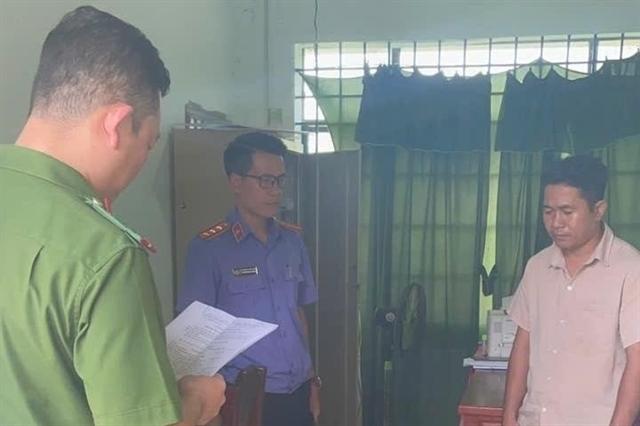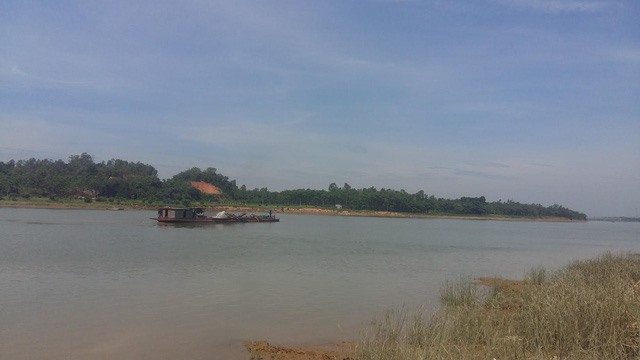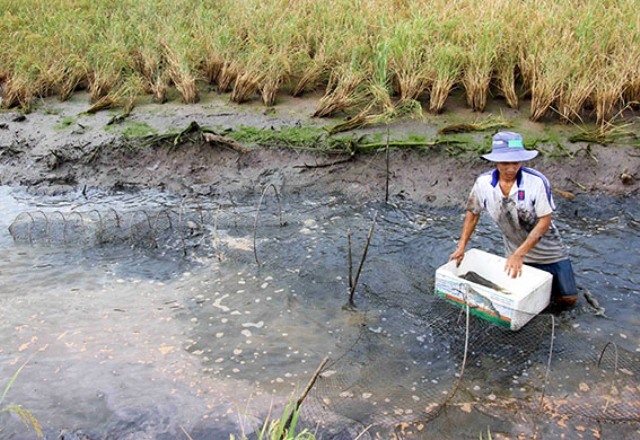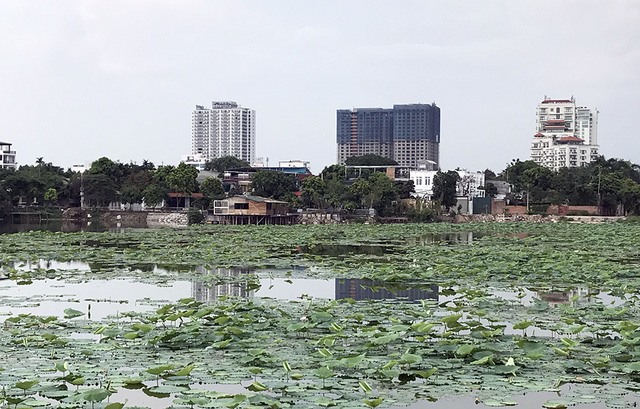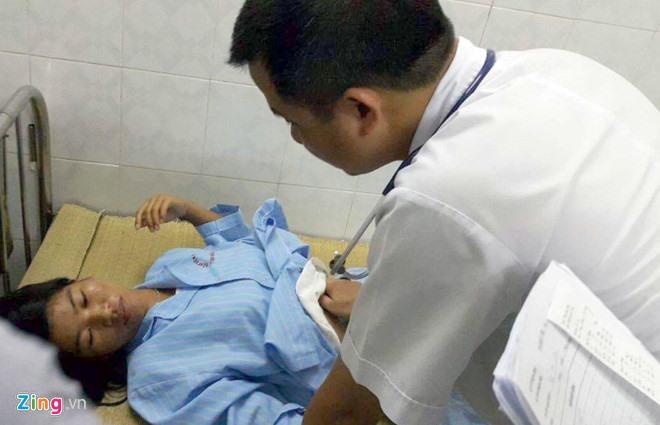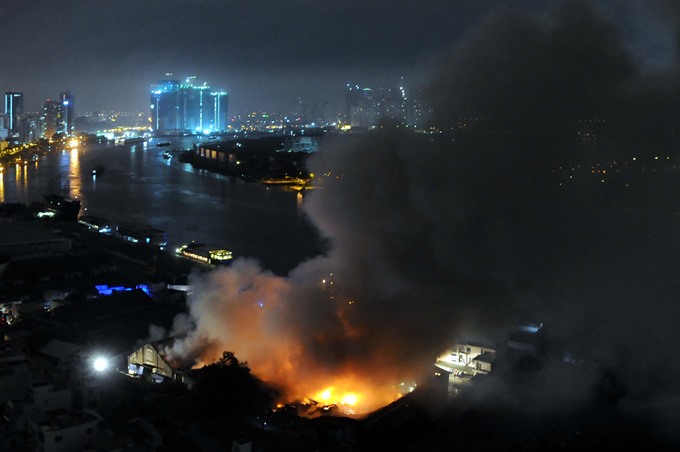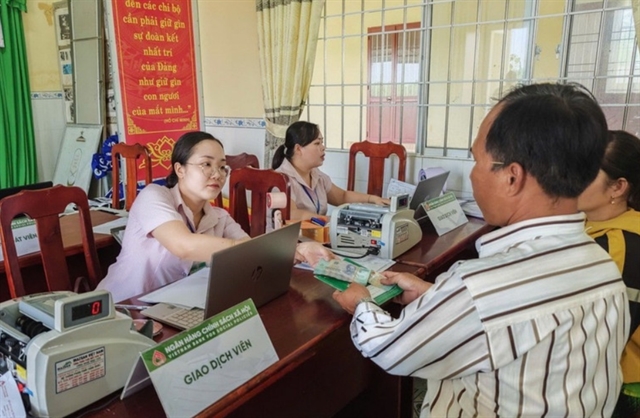
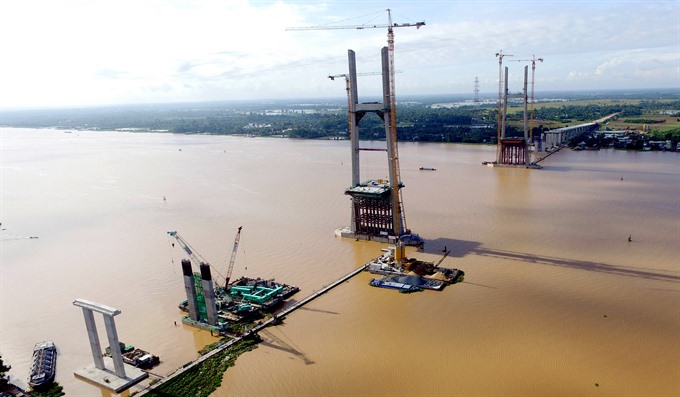 |
| The Cao Lãnh bridge, a 2km long cable-stayed bridge currently under construction crossing the Tiền River in the Mekong Delta province of Đồng Tháp. The VNĐ3 trillion (US$132 million) bridge is the second largest one to be constructed under a project to link localities in the Mekong Delta region. — VNA/VNS Photo Mạnh Linh |
CẦN THƠ — Scarce funding and other resources should be directed to priority projects as the main measure to remove traffic bottlenecks in the Mekong Dela region, Deputy PM Trịnh Đình Dũng said yesterday.
This has to be done soon to unleash the full potential of the region considered one of the country’s key economic zones, he said at meeting with ministries, agencies, private investors, commercial banks and provincial authorities in the region.
The meeting discussed ways to speed up important traffic projects in the region.
Recognising the region’s importance, the government is paying attention to developing traffic infrastructure – including airways, waterways, and road transportation, Dung said.
However, the implementation of traffic projects hasn’t proceeded as expected, delaying the government’s plan to connect different areas in the Mekong Delta region with the more developed urban area of HCM City, he added.
Dũng said the main reason for the tardiness was the lack of funds. Important traffic projects need large sums beyond the capacity of provinces as well as the central budget. Budgetary constraints have left 26 projects unfinished. Of a total estimated cost of VNĐ 88 trillion (US$3 billion), only 20 trillion ($880 million) – or 22.7 per cent – has been disbursed from the State Budget. Foreign loans are not reliable means at the moment since public debt has almost reached its ceiling.
Other issues have also affected the projects, including a shortage of building materials like sand, following recent crackdowns on illegal sand mining operations, cumbersome tender processes, high prices and interest rates.
The best way forward in this context is to prioritise projects based on their importance, the Deputy PM said, adding that solving transportation bottlenecks in the region needs to get the highest attention so that key targets are met by 2020.
Two of the bottlenecks are located on the HCM City – Trung Lương Highway, which connects the southern metropolis with several Mekong Delta provinces: the VNĐ 9 trillion ($396 million) Trung Lương – Mỹ Thuận highway; and the VNĐ 7 trillion ($308 million) Mỹ Thuận – Cần Thơ highway.
In the former project, only 50 per cent of the land clearance work has been done, while the project itself is scheduled to be completed in 2019 and go operational in 2020. For the latter, the Deputy PM urged that the bidding process be started, with due attention paid to the cost and transparency.
He said the Ministry of Transport (MoT) has been asked to prepare a detailed report on traffic bottlenecks in each Mekong province so the government can allocate budget from state bonds in long-term.
Transport Ministry officials and local authorities reported that they were mobilising capital to invest in a number of dredging projects at estuaries and inland waterways to facilitate navigation.
At the meeting, the Deputy PM also answered concerns and requests mentioned by the Ministry of Planning and Investment about adjustments of existing policies, including the Law on Public Investment, the Finance Ministry’s Circular 55 on interest rates and Circular 44 relating to price brackets.
Earlier, on Thursday, a working group led by Deputy PM Trịnh Đình Dũng had inspected the progress of construction at several traffic projects in the southern provinces of Sóc Trăng, Hậu Giang, Cần Thơ, and Đồng Tháp. — VNS

